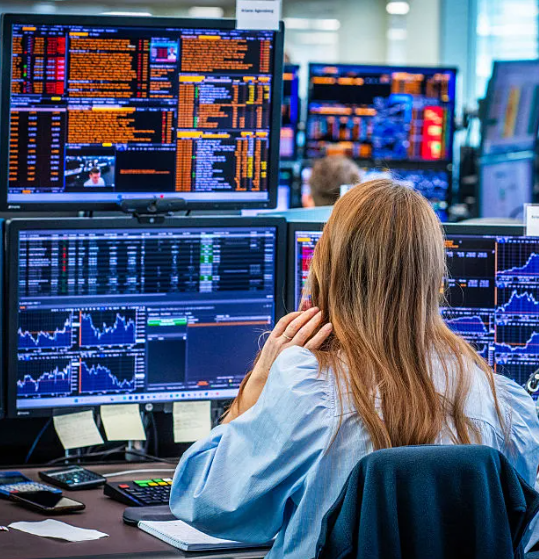In today’s financial markets, crowded trades have become a growing source of concern. A trade is considered “crowded” when a large number of institutional investors hold positions in a security that lacks sufficient liquidity to handle swift or simultaneous exits. The risk here isn’t just about market fundamentals—it comes from the market participants themselves. As institutional investors dominate trading, particularly hedge funds with high leverage and concentrated bets, crowded positions can become flashpoints for sudden price dislocations.
Crowdedness isn’t always visible until stress hits. When multiple investors try to exit the same position simultaneously, the lack of liquidity can cause prices to plunge. These cascades, especially under forced deleveraging, may amplify losses and introduce systemic risk.
What Does It Mean for a Trade to Be Crowded?
At its core, a crowded trade reflects an imbalance between how many investors are in a position and how easily that position can be exited. It often results from a convergence of traders on similar strategies—especially in environments where the number of available opportunities is limited, and information is widely shared.
Institutional investors, particularly hedge funds, tend to take large, leveraged positions. But with limited insight into how many others are pursuing the same ideas, they may unknowingly pile into the same trades. When markets turn, this lack of coordination becomes dangerous, and collective unwinding can trigger outsized price swings.
This issue has only intensified over time. The number of institutional investors has grown significantly, while the pool of publicly traded companies has shrunk. As a result, more capital is concentrated in fewer places. The implications are clear: crowding has become a more prominent risk factor, not only in the U.S. but globally.
The Mechanics and Risk of Crowding
Crowded trades become hazardous under stress. When unexpected shocks hit the market, multiple investors may be forced to liquidate similar positions at once. Without sufficient liquidity, this creates a downward spiral, exacerbating losses. Even sophisticated strategies are vulnerable—quant funds famously suffered dramatic losses during the 2007 quant crisis, largely due to crowding and leverage.
Crucially, this kind of downside risk isn’t always captured by traditional models. Crowding introduces a form of endogenous market risk, where the behavior of participants becomes a key driver of volatility. As a result, institutions increasingly monitor crowdedness to avoid getting caught in a mass exit.
Measuring Crowdedness in Practice
Several methods have been developed to quantify how crowded a trade is. One commonly used metric is Days-ADV, which measures the number of trading days it would take for institutional investors to fully unwind a position, given average daily volume. A higher value implies a more crowded position, especially when both ownership levels and liquidity constraints are high.
Another approach is the activity ratio, which relates institutional ownership to turnover. Again, higher values point to potential crowding issues. Both measures aim to identify positions that, under stress, could cause significant market dislocations.
These indicators are especially relevant for hedge funds, whose holdings tend to be more concentrated and less transparent. By focusing on these metrics, traders and risk managers can better assess exposure to crowding-related volatility.
Downside Risks Linked to Crowding
The empirical evidence is clear: crowded trades carry a higher risk of sharp losses. Stocks with high crowding scores exhibit greater negative skewness in returns and increased downside volatility. This pattern holds true even after accounting for fundamentals such as size, leverage, and profitability.
The risk is especially acute for hedge funds. Funds heavily invested in crowded names experienced more severe drawdowns during financial crises, and their chances of disappearing from databases (i.e., shutting down) were significantly higher. The takeaway? Crowding is a material and persistent source of downside risk.
Can Crowded Trades Still Be Profitable?
Interestingly, crowding isn’t always bad for returns. In fact, crowded positions often outperform on average. This might seem counterintuitive—why would investors persist in these trades if the risks are so high?
One explanation is that crowded trades reflect collective conviction among informed investors. In some cases, hedge funds may identify mispriced assets or anomalies and pile in. While this increases risk, it can also lead to higher expected returns—especially when the trade aligns with underlying economic fundamentals.
Empirical studies show that portfolios of the most crowded stocks, when sorted by crowding scores like Days-ADV, produce significantly positive alphas. Conversely, the least crowded stocks tend to underperform. These findings suggest that while crowding raises the risk of tail events, it can also be a sign of smart money at work.
Balancing Risk and Reward
So, how should investors think about crowdedness? On one hand, crowded trades offer the potential for higher returns, especially when they stem from shared insights or fundamental mispricings. On the other hand, they introduce exposure to sudden and severe drawdowns, especially under liquidity stress.
Crowding risk is not a reason to avoid such trades altogether. But it is a reason to manage them carefully—through diversification, monitoring liquidity conditions, and limiting leverage. Crowdedness should be treated as both a risk factor and a performance signal, depending on the market context.
In a world where capital moves quickly and strategies are widely shared, understanding the dynamics of crowded trades is critical. Whether you’re a portfolio manager or an institutional allocator, knowing when too many traders are chasing the same idea could make all the difference when volatility strikes.
